Diversity of Fishes: Biology, Evolution and Ecology, 3rd Edition
Douglas E. Facey
Visit to download the full and correct content document: https://ebookmass.com/product/the-diversity-of-fishes-biology-evolution-and-ecology3rd-edition-douglas-e-facey/

More products digital (pdf, epub, mobi) instant download maybe you interests ...
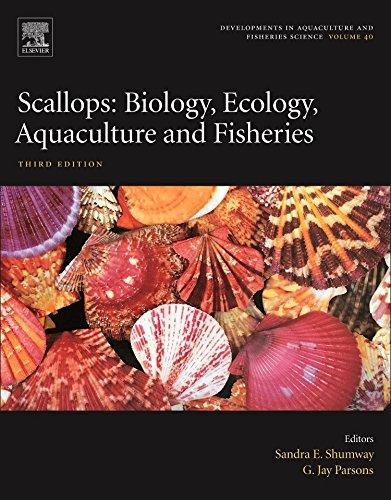
Scallops Biology, Ecology, Aquaculture, and Fisheries
3rd Edition Sandra E. Shumway And G. Jay Parsons (Eds.)
https://ebookmass.com/product/scallops-biology-ecologyaquaculture-and-fisheries-3rd-edition-sandra-e-shumway-and-g-jayparsons-eds/

Biology : the unity and diversity of life 15th Edition Cecie Starr
https://ebookmass.com/product/biology-the-unity-and-diversity-oflife-15th-edition-cecie-starr/

Biology: Exploring the Diversity of Life, Fifth Canadian Edition Shelby
https://ebookmass.com/product/biology-exploring-the-diversity-oflife-fifth-canadian-edition-shelby/

Carnivoran Ecology : The Evolution and Function of Communities Steven W. Buskirk
https://ebookmass.com/product/carnivoran-ecology-the-evolutionand-function-of-communities-steven-w-buskirk-2/
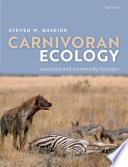
Carnivoran Ecology: The Evolution and Function of Communities Steven W. Buskirk
https://ebookmass.com/product/carnivoran-ecology-the-evolutionand-function-of-communities-steven-w-buskirk/

A Primer of Life Histories: Ecology, Evolution, and Application Hutchings
https://ebookmass.com/product/a-primer-of-life-histories-ecologyevolution-and-application-hutchings/
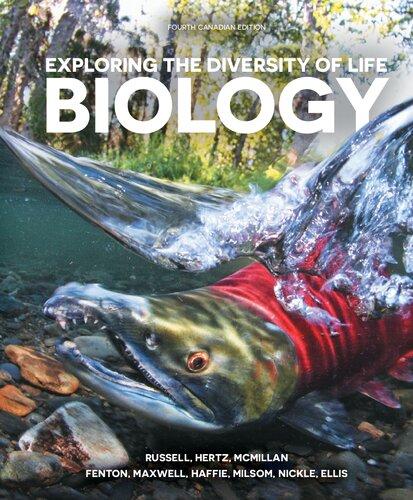
Biology: Exploring the Diversity of Life 4th Canadian Edition Edition Peter Russell
https://ebookmass.com/product/biology-exploring-the-diversity-oflife-4th-canadian-edition-edition-peter-russell/
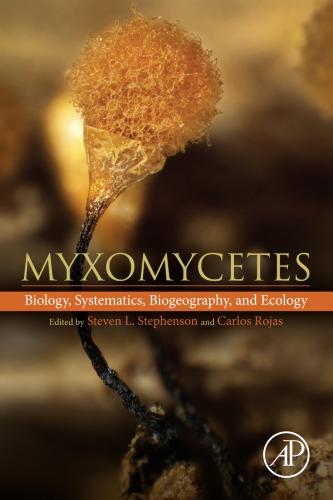
Myxomycetes: biology, systematics, biogeography, and ecology Elsevier.
https://ebookmass.com/product/myxomycetes-biology-systematicsbiogeography-and-ecology-elsevier/

Fundamentals of Soil Ecology 3rd Edition
https://ebookmass.com/product/fundamentals-of-soil-ecology-3rdedition/
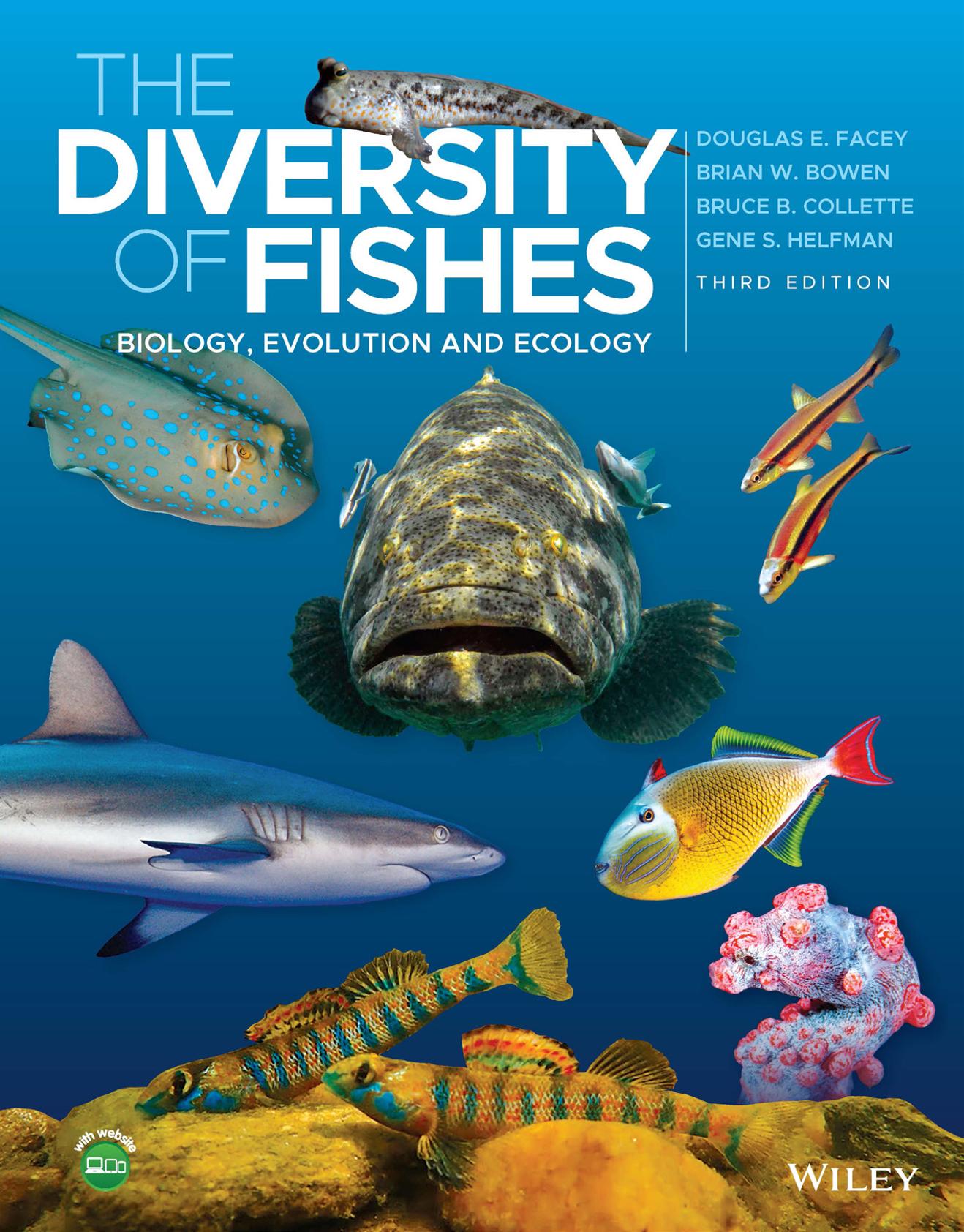
The Diversity of Fishes
The Diversity of Fishes Biology,
Evolution and Ecology
Third Edition
DOUGLAS E. FACEY
Emeritus Professor of Biology, Saint Michael’s College, Vermont, USA
BRIAN W. BOWEN
Research Professor, Hawaii Institute of Marine Biology, University of Hawaii at Manoa, Honolulu, Hawaii, USA
BRUCE B. COLLETTE
Research Associate, NOAA, National Museum of Natural History, Smithsonian Institution, Washington, DC, USA
GENE S. HELFMAN
Emeritus Professor of Ecology, Odum School of Ecology, University of Georgia, Athens, Georgia, USA
This edition first published 2023
© 2023 John Wiley & Sons Ltd
Edition History
Gene S. Helfman, Bruce B. Collette, Douglas E. Facey (1e, 1997); Gene S. Helfman, Bruce B. Collette, Douglas E. Facey, and Brian W. Bowen (2e, 2009)
All rights reserved. No part of this publication may be reproduced, stored in a retrieval system, or transmitted, in any form or by any means, electronic, mechanical, photocopying, recording or otherwise, except as permitted by law. Advice on how to obtain permission to reuse material from this title is available at http://www.wiley.com/go/permissions.
The right of Douglas E. Facey, Brian W. Bowen, Bruce B. Collette, and Gene S. Helfman to be identified as the authors of this work has been asserted in accordance with law.
Registered Offices
John Wiley & Sons, Inc., 111 River Street, Hoboken, NJ 07030, USA
John Wiley & Sons Ltd, The Atrium, Southern Gate, Chichester, West Sussex, PO19 8SQ, UK
Editorial Office
The Atrium, Southern Gate, Chichester, West Sussex, PO19 8SQ, UK
For details of our global editorial offices, customer services, and more information about Wiley products visit us at www.wiley.com.
Wiley also publishes its books in a variety of electronic formats and by print-on-demand. Some content that appears in standard print versions of this book may not be available in other formats.
Limit of Liability/Disclaimer of Warranty
While the publisher and authors have used their best efforts in preparing this work, they make no representations or warranties with respect to the accuracy or completeness of the contents of this work and specifically disclaim all warranties, including without limitation any implied warranties of merchantability or fitness for a particular purpose. No warranty may be created or extended by sales representatives, written sales materials or promotional statements for this work. The fact that an organization, website, or product is referred to in this work as a citation and/or potential source of further information does not mean that the publisher and authors endorse the information or services the organization, website, or product may provide or recommendations it may make. This work is sold with the understanding that the publisher is not engaged in rendering professional services. The advice and strategies contained herein may not be suitable for your situation. You should consult with a specialist where appropriate. Further, readers should be aware that websites listed in this work may have changed or disappeared between when this work was written and when it is read. Neither the publisher nor authors shall be liable for any loss of profit or any other commercial damages, including but not limited to special, incidental, consequential, or other damages.
Library of Congress Cataloging-in-Publication Data
Names: Facey, Douglas E., author. | Bowen, Brian W. (Brian William), 1957author. | Collette, Bruce B., author. | Helfman, Gene S., author.
Title: The diversity of fishes : biology, evolution and ecology / Douglas E. Facey, Brian W. Bowen, Bruce B. Collette, Gene S. Helfman.
Description: Third edition. | Hoboken, NJ : Wiley, 2023. | Revised edition of: The diversity of fishes / Gene Helfman ... [et al.] 2nd ed. 2009. | Includes bibliographical references and index.
Identifiers: LCCN 2022030874 (print) | LCCN 2022030875 (ebook) | ISBN 9781119341918 (cloth) | ISBN 9781119341802 (adobe pdf) | ISBN 9781119341833 (epub)
Subjects: LCSH: Fishes. | Fishes—Variation. | Fishes—Adaptation.
Classification: LCC QL615 .F33 2023 (print) | LCC QL615 (ebook) | DDC 597–dc23/eng/20220810
LC record available at https://lccn.loc.gov/2022030874
LC ebook record available at https://lccn.loc.gov/2022030875
Cover Design: Wiley
Cover Images: Courtesy of Gene Helfman; Luiz A. Rocha, California Academy of Sciences; Jon Hyde & Kimberly Sultze, www.hydesultze.com; Andrew Nagy
To our parents, for their encouragement of our nascent interest in things biological; To our spouses – Janice, RuthEllen, Sara, and Judy – for their patience and understanding during the production of this volume; And to students, colleagues, and fish lovers for their efforts to preserve biodiversity for future generations.
Preface to the Third Edition
Thank you to all who helped make the first two editions of The Diversity of Fishes successful. We greatly appreciate the feedback and suggestions from those who have used them. And to those who have been asking us about an update – thanks for your patience. Here is what you can expect in the third edition.
• We have done our best to update information while recognizing that no textbook can represent the most current information in any large field. This book is intended as a starting point, not the final destination. Therefore, we encourage those using the text to consult more current sources for updated information.
• This edition includes more color photographs to better demonstrate the diversity and beauty of fishes that attract many to the field. We include photographs from public agencies, in part to acknowledge the valuable contributions to Ichthyology of those in natural resources and management organizations.
• Reorganization and consolidation of some topics has reduced the total number of chapters to 22.
• Each chapter begins with a Summary that provides a broad overview of the content of that chapter. This may be particularly useful for those using the text for a course and who do not intend to utilize some chapters in detail –students can read the summary of each of those chapters.
• Molecular genetics has transformed many aspects of ichthyology over the last few decades, and this is reflected throughout the text. Important concepts are introduced in Chapters 1 and 2, supported by an Appendix of terminology at the end of the book, and specific contributions of molecular genetics to the field of ichthyology are included in many chapters.
• Structure and function are addressed together rather than treated in separate chapters. For example, Chapter 3 addresses structure and function of the head (e.g. bones, muscles, breathing, jaw suspension, feeding, dentition),
and Chapter 4 addresses structure and function of the trunk (e.g. bones, muscles, integument, scales, fins, locomotion).
• In chapters addressing the history of the fishes (Chapter 11) and systematics of the major groups of fishes (Chapters 12–15), we have largely adopted the approach of Nelson et al. (2016), which includes consideration of molecular phylogenetics. However, we have retained the approach of Nelson (2006) where conclusions from molecular data are quite different from those based on morphological evidence (see Chapter 15, for example). We note differences between the approaches and encourage readers to consult current sources for updated information and perspectives, as our collective understanding of the relationships among groups of fishes continues to evolve.
• Fishes as predators and prey are considered together in one chapter (Chapter 16). Many fishes are both predators and prey, and many physical and behavioral adaptations are rather similar and, in some cases, may have developed in response to one another.
• Our chapter on Zoogeography and Phylogeography (Chapter 19) uses global maps that more accurately represent the comparative sizes of oceans and landmasses than maps used in prior editions.
• Fish populations are covered in Chapter 20, including Population Ecology, Population Dynamics and Regulation, and Population Genetics.
• Fish interactions with other species within fish assemblages and broader communities, and their impacts on ecosystems are addressed in Chapter 21. This is a long chapter but avoids the redundancy of addressing similar types of interactions and impacts in multiple chapters.
• As in the past, we conclude with a chapter on Conservation (Chapter 22), but this now includes Conservation Genetics.
Preface to the Second Edition
The first edition of The diversity of fishes was successful beyond our wildest dreams. We have received constant and mostly positive feedback from readers, including much constructive criticism, all of which convinces us that the approach we have taken is satisfactory to ichthyological students, teachers, and researchers. Wiley-Blackwell has validated that impression: by their calculations, The diversity of fishes is the most widely adopted ichthyology textbook in the world.
However, ichthyology is an active science, and a great deal of growth has occurred since this book was first published in 1997. Updates and improvements are justified by active and exciting research in all relevant areas, including a wealth of new discoveries (e.g., a second coelacanth species, 33 more megamouth specimens, several new record tiniest fishes, and exciting fossil discoveries including some that push back the origin of fishes many million years and another involving a missing link between fishes and amphibians), application of new technologies (molecular genetics, transgenic fish), and increased emphasis on conservation issues (e.g., Helfman 2007). Websites on fishes were essentially nonexistent when the first edition was being produced; websites now dominate as an instant source of information. Many of the volumes we used as primary references have themselves been revised. Reflective of these changes, and of shortcomings in the first edition, is the addition of a new chapter and author. Genetics received insufficient coverage, a gross omission that has been corrected by Brian Bowen’s contribution of a chapter devoted to that subject and by his suggested improvements to many other chapters. Brian’s contributions were aided by extensive and constructive comments from Matthew Craig, Daryl Parkyn, Luiz Rocha, and Robert Toonen. He is especially grateful to John Avise, Robert Chapman, and John Musick for their guidance and mentorship during his professional career, and most of all to his wife, RuthEllen, for her forbearance and support.
Among the advances made in the decade following our initial publication, a great deal has been discovered about the phylogeny of major groups, especially among jawless fishes, sarcopterygians, early actinopterygians, and holocephalans. In almost all taxa, the fossil record has expanded, prompting reanalysis and sometimes culminating in conflicting
interpretations of new findings. A basic textbook is not the appropriate place to attempt to summarize or critique the arguments, opinions, and interpretations. We have decided to accept one general compilation and synthesis. As in the 1997 edition, where we adopted with little adjustment the conclusions and terminology of Nelson (1996), we here follow Nelson (2006), who reviews the recent discoveries and clearly presents and assesses the many alternative hypotheses about most groups. Instructors who used our first edition will have to join us in learning and disseminating many changed names as well as rearrangements among taxa within and among phylogenies, especially Chapters 11–13. Science is continually self-correcting. We should applaud the advances and resist the temptation to comfortably retain familiar names and concepts that have been modified in light of improved knowledge. Also, we have now adopted the accepted practice of capitalizing common names.
Acknowledgments
Thanks especially to the many students and professionals who corrected errors in the first edition (J. Andrew, A. Clarke, D. Hall, G.D. Johnson, H. Mattingly, P. Motta, L.R. Parenti, C. Reynolds, C. Scharpf, E. Schultz, M.L.J. Stiassny, and S. Vives proved particularly alert editors). Their suggestions alone led to many changes, to which we have added literally hundreds of new examples, facts, and updates. Wiley-Blackwell has provided a website for this second edition, www.wiley.com/go/helfman, through which we hope to again correct and update the information provided here. We encourage any and all to inform us wherever they encounter real or apparent errors of any kind in this text. Please write directly to us. Chief responsibilities fell on GSH for Chapters 1, 8–15, and 18–26 (genehelfman@gmail.com); on BBC for Chapters 2–4 and 16 (collettb@si.edu); on DEF for Chapters 5–7 (dfacey@smcvt.edu), and on BWB for Chapter 17 (bbowen@ hawaii.edu). Once again and more than anything, we want to get it right.
Preface to the First Edition
Two types of people are likely to pick up this book, those with an interest in fishes and those with a fascination for fishes. This book is written by the latter, directed at the former, with the intent of turning interest into fascination.
Our two major themes are adaptation and diversity. These themes recur throughout the chapters. Wherever possible, we have attempted to understand the adaptive significance of an anatomical, physiological, ecological, or behavioral trait, pointing out how the trait affects an individual’s probability of surviving and reproducing. Our focus on diversity has prompted us to provide numerous lists of species that display particular traits, emphasizing the parallel evolution that has occurred repeatedly in the history of fishes, as different lineages exposed to similar selection pressures have converged on similar adaptations.
The intended audience of this book is the senior undergraduate or graduate student taking an introductory course in ichthyology, although we also hope that the more seasoned professional will find it a useful review and reference for many topics. We have written this book assuming that the student has had an introductory course in comparative anatomy of the vertebrates, with at least background knowledge in the workings of evolution. To understand ichthyology, or any natural science, a person should have a solid foundation in evolutionary theory. This book is not the place to review much more than some basic ideas about how evolutionary processes operate and their application to fishes, and we strongly encourage all students to take a course in evolution. Although a good comparative anatomy or evolution course will have treated fish anatomy and systematics at some length, we go into considerable detail in our introductory chapters on the anatomy and systematics of fishes. The nomenclature introduced in these early chapters is critical to understanding much of the information presented later in the book; extra care spent reading those chapters will reduce confusion about terminology used in most other chapters.
More than 27,000 species of fishes are alive at present. Students at the introductory level are likely to be overwhelmed by the diversity of taxa and of unfamiliar names. To facilitate this introduction, we have been selectively inconsistent in our use of scientific versus common names. Some common names are likely to be familiar to most readers, such as salmons, minnows, tunas, and freshwater sunfishes; for these and many others, we have used the common family designation freely. For other, less familiar groups (e.g., Sundaland noodlefishes, trahiras, morwongs), we are as likely to use scientific as common names. Many fish families have no common English name and for these we use the Anglicized scientific designation (e.g., cichlids, galaxiids, labrisomids). In all cases, the first time a family is
encountered in a chapter we give the scientific family name in parentheses after the common name. Both scientific and common designations for families are also listed in the index. As per an accepted convention, where lists of families occur, taxa are listed in phylogenetic order. We follow Nelson et al. (1994, now updated) on names of North American fishes and Robins et al. (1991, also now updated) on classification and names of families and of higher taxa. In the few instances where we disagree with these sources, we have tried to explain our rationale.
Any textbook is a compilation of facts. Every statement of fact results from the research efforts of usually several people, often over several years. Students often lose sight of the origins of this information, namely the effort that has gone into verifying an observation, repeating an experiment, or making the countless measurements necessary to establish the validity of a fact. An entire dissertation, representing 3–5 or more years of intensive work, may be distilled down to a single sentence in a textbook. It is our hope that as you read through the chapters in this book, you will not only appreciate the diversity of adaptation in fishes, but also consider the many ichthyologists who have put their fascination to practical use to obtain the facts and ideas we have compiled here. To acknowledge these efforts, and because it is just good scientific practice, we have gone to considerable lengths to cite the sources of our information in the text, which correspond to the entries in the lengthy bibliography at the end of the book. This will make it possible for the reader to go to a cited work and learn the details of a study that we can only treat superficially. Additionally, the end of each chapter contains a list of supplemental readings, including books or longer review articles that can provide an interested reader with a much greater understanding of the subjects covered in the chapter.
This book is not designed as a text for a course in fisheries science. It contains relatively little material directly relevant to such applied aspects of ichthyology as commercial or sport fisheries or aquaculture; several good text and reference books deal specifically with those topics (for starters, see the edited volumes by Lackey & Nielsen 1980, Nielsen & Johnson 1983, Schreck & Moyle 1990, and Kohler & Hubert 1993). We recognize however that many students in a college-level ichthyology class are training to become professionals in those or related disciplines. Our objectives here are to provide such readers with enough information on the general aspects of ichthyology to make informed, biologically sound judgments and decisions, and to gain a larger appreciation of the diversity of fishes beyond the relatively small number of species with which fisheries professionals often deal.
Adaptations versus adaptationists
Our emphasis throughout this text on evolved traits and the selection pressures responsible for them does not mean that we view every characteristic of a fish as an adaptation. It is important to realize that a living animal is the result of past evolutionary events, and that animals will be adapted to current environmental forces only if those forces are similar to what has happened to the individual’s ancestors in the past. Such phylogenetic constraints arise from the long-term history of a species. Tunas are masters of the open sea as a result of a streamlined morphology, large locomotory muscle mass connected via efficient tendons to fused tail bones, and highly efficient respiratory and circulatory systems. But they rely on water flowing passively into their mouths and over their gills to breathe and have reduced the branchiostegal bones in the throat region that help pump water over their gills. Tunas are, therefore, constrained phylogenetically from using habitats or foraging modes that require them to stop and hover, because by ceasing swimming they would also cease breathing.
Animals are also imperfect because characteristics that have evolved in response to one set of selective pressures often create problems with respect to other pressures. Everything in life involves a trade-off, another recurring theme in this text. The elongate pectoral fins (“wings”) of a flyingfish allow the animal to glide over the water’s surface faster than it can swim through the much denser water medium. However, the added surface area of the enlarged fins creates drag when the fish is swimming. This drag increases costs in terms of a need for larger muscles to push the body through the water, requiring greater food intake, time spent feeding, etc. The final mix of traits evolved in a species represents a compromise involving often-conflicting demands placed on an organism. Because of phylogenetic constraints, trade-offs, and other factors, some fishes and some characteristics of fishes appear to be and are poorly adapted. Our emphasis in this book is on traits for which function has been adequately demonstrated or appears obvious. Skepticism about apparent adaptations can only lead to greater understanding of the complexities of the evolutionary process. We encourage and try to practice such skepticism.
Acknowledgments
This book results from effort expended and information acquired over most of our professional lives. Each of us
has been tutored, coaxed, aided, and instructed by many fellow scientists. A few people have been particularly instrumental in facilitating our careers as ichthyologists and deserve special thanks: George Barlow, John Heiser, Bill McFarland, and Jack Randall for GSH; Ed Raney, Bob Gibbs, Ernie Lachner, and Dan Cohen for BBC; Gary Grossman and George LaBar for DEF. The help of many others is acknowledged and deeply appreciated, although they go unmentioned here.
Specific aid in the production of this book has come from an additional host of colleagues. Students in our ichthyology classes have written term papers that served as literature surveys for many of the topics treated here; they have also critiqued drafts of chapters. Many colleagues have answered questions, commented on chapters and chapter sections, loaned photographs, and sent us reprints, requested and volunteered. Singling out a few who have been particularly helpful, we thank C. Barbour, J. Beets, W. Bemis, T. Berra, J. Briggs, E. Brothers, S. Concelman, J. Crim, D. Evans, S. Hales, B. Hall, C. Jeffrey, D. Johnson, G. Lauder, C. Lowe, D. Mann, D. Martin, A. McCune, J. Meyer, J. Miller, J. Moore, L. Parenti, L. Privitera, T. Targett, B. Thompson, P. Wainwright, J. Webb, S. Weitzman, D. Winkelman, J. Willis, and G. Wippelhauser. Joe Nelson provided us logistic aid and an early draft of the classification incorporated into the 3rd edition of his indispensable Fishes of the world. Often animated and frequently heated discussions with ichthyological colleagues at annual meetings of the American Society of Ichthyologists and Herpetologists have been invaluable for separating fact from conventional wisdom. Gretchen Hummelman and Natasha Rajack labored long and hard over copyright permissions and many other details. Academic departmental administrators gave us encouragement and made funds and personnel available at several crucial junctures during production. At the University of Georgia we thank J. Willis (Zoology), R. Damian (Cell biology), and G. Barrett, R. Carroll, and R. Pulliam (Ecology) for their support. At St. Michael’s College, we thank D. Bean (Biology). The personnel of Blackwell Science, especially Heather Garrison, Jane Humphreys, Debra Lance, Simon Rallison, Jennifer Rosenblum, and Gail Segal, exhibited patience and professionalism at all stages of production.
Finally, a note on the accuracy of the information contained in this text. As Nelson Hairston Sr. has so aptly pointed out, “Statements in textbooks develop a life independent of their validity.” We have gone to considerable lengths to get our facts straight, or to admit where uncertainties lie. We accept full responsibility for the inevitable errors that do appear, and we welcome hearing about them. Please write directly to us with any corrections or comments. Chief responsibilities fell on GSH for Chapters 1, 8–15, and 17–25; on BBC for Chapters 2–4 and 16; and on DEF for Chapters 5–7.
Acknowledgments
Thank you to the many students and colleagues who provided constructive feedback on the first two editions. We hope that we were able to honor most of your suggestions in the preparation of this third edition.
We are profoundly grateful to colleagues who provided advice, reviews, encouragement, and logistic support during construction of the third edition, including A.M. Friedlander, M.A. Hixon, G. Orti, J.E. Randall, L.A. Rocha, R.J. Toonen. and the ToBo Lab at Hawai’i Institute of Marine Biology. Special thanks to R.C. Thomson for reviewing Chapter 2 (Phylogenetic Procedures), J. Webb for specific feedback on Chapter 6 (Nervous System and Sensory Organs), M. Wilson for clarifying some questions regarding Nelson et al. (2016), and to R. Hayden and the editing team at Wiley.
We also deeply appreciate the willingness of the following students and colleagues to share their artwork and photographs with us for use in the text: L. Allen, C.M. Ayers, C. Bauder, T. Berra,
S.A. Bortone, E. Burress, R. Carlson, L. and C. Chapman, C. Clark, J. DeVivo, C. Cox Fernandes, B. and M. Freeman, J- F Healias, G. Hendsbee, Z. Hogan, M. Horn, K. Hortle, J. Hyde, T. Kelsey, R. Martel, A. Nagy, T.W. Pietsch, E.P. Pister, J. Randall, L.A. Rocha, R. Steene, K. Sultze, A. Summers, P. Vecsei, E. Widder, B. Young. We also thank the global community of photographers willing to share their work online, including employees of public agencies whose work is in the public domain.
Douglas Facey (dfacey@smcvt.edu) reorganized the topics and updated content throughout the book. Brian Bowen (bbowen@hawaii.edu) provided molecular genetics content and updates throughout the text, and also provided editorial input on multiple chapters. Bruce Collette (collettb@si.edu) assisted with updates of systematics in Chapters 11–15. Gene Helfman (genehelfman@gmail.com) took the lead role on the first two editions and provided editorial feedback on most chapters of this current edition.
About the Companion Website
This book is accompanied by a companion website.
www.wiley.com/go/facey/diversityfishes3
Resources include:
• Figures and tables from the book
• Links to supplementary, supporting content

PART I Introduction
The Science of Ichthyology
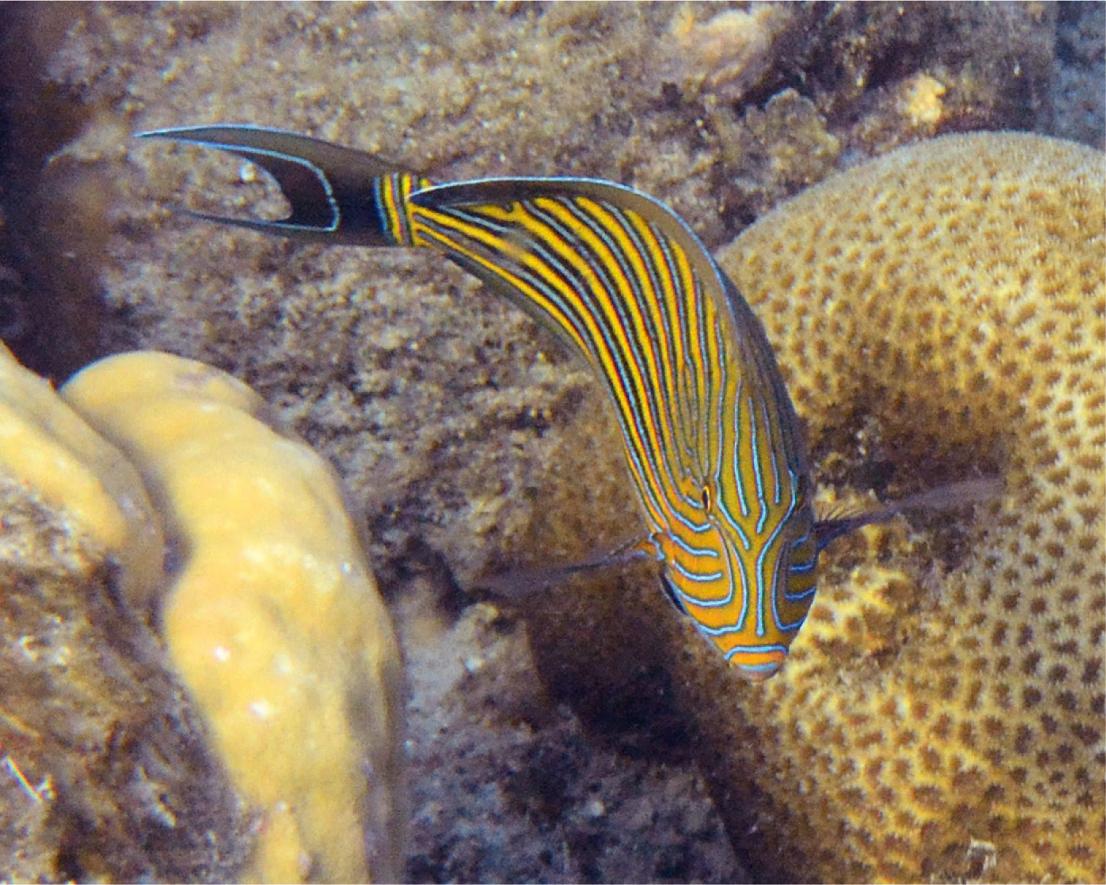
Summary
Fishes account for more than half of all living vertebrates and exhibit remarkable evolution and diversity. There are over 35,000 living species of fishes (approaching 36,000 as we prepare this edition), of which over 100 are jawless (hagfishes, lampreys), approximately 1100 are cartilaginous (sharks, skates, rays), and the remaining are bony fishes.
A fish can be defined as an aquatic vertebrate with gills and with limbs in the shape of fins. There are, however, exceptions to such general rules, including hagfishes (nonvertebrate craniates) and some fishes that have lost their paired fins over evolutionary time (e.g. moray eels). Included in this definition is a tremendous diversity of sizes (from 8 mm gobies and minnows to the 12 + m Whale Shark), shapes, ecological functions, life history scenarios, anatomical specializations, and evolutionary histories.
Our current understanding of the relationships among the major extant lineages of fishes and other vertebrates shows that fishes include members of four different classes of vertebrates. The hagfishes (class Myxini) are craniates but not vertebrates. The major groups of living vertebrates include the lampreys (class Petromyzontida), sharks and other cartilaginous fishes (class Chondrichthyes), and the bony fishes and their descendants (class Osteichthyes). The Osteichthyes include the subclass Sarcopterygii (the lobe-finned fishes and their tetrapod descendants) and the subclass Actinopterygii (the ray-finned fishes).
CHAPTER CONTENTS
Summary
Introduction What Is a Fish?
Vertebrate Classes
The Diversity of Fishes
Superlative Fishes
A Brief History of Ichthyology
Introduction to Fish Genetics
Additional Sources of Information
Supplementary Reading
The Diversity of Fishes: Biology, Evolution and Ecology, Third Edition. Douglas E. Facey, Brian W. Bowen, Bruce B. Collette, and Gene S. Helfman. © 2023 John Wiley & Sons Ltd. Published 2023 by John Wiley & Sons Ltd. Companion website: www.wiley.com/go/facey/diversityfishes3
Most (about 60%) living fishes are primarily marine, and the remainder live in freshwater; about 1% move between salt and freshwater as a normal part of their life cycle. The greatest diversity of fishes is found in the tropics, particularly the Indo-West Pacific region for marine fishes and tropical South America, Africa, and Southeast Asia for freshwater species.
Unusual adaptations among fishes include African lungfishes that can survive buried in dry mud for up to 4 years, Antarctic fishes that produce their own antifreeze compounds, deep-sea fishes that can swallow prey larger than themselves (some deep-sea fishes exist as small males that are entirely parasitic on larger females), species that live less than a year and other species that may live hundreds of years, fishes that change sex from female to male or vice versa, sharks that provide nutrition for developing young via a complex placenta, fishes that create an electric field around themselves and detect biologically significant disturbances of the field, light-emitting fishes, warm-blooded fishes, and at least one group, the coelacanths, that was thought to have gone extinct with the dinosaurs.
Historically important contributions to ichthyology were made by Linnaeus, Peter Artedi, Georges Cuvier, Achille Valenciennes, Albert Günther, David Starr Jordan, B. W. Evermann, C. Tate Regan, and Leo S. Berg, among many others.
Genetics and molecular techniques have become integral and essential components to understanding fish biology, evolution, and ecology. In many cases, similarities in DNA probably more accurately reflect evolutionary relationships among groups than do morphological similarities.
The literature on fishes is voluminous, including collegelevel textbooks, popular and technical books, and websites that contain information on particular geographic regions, taxonomic groups, or species sought by anglers or best suited for aquarium keeping or aquaculture. Scientific journals with a local, national, or international focus are produced in many countries. Another valuable source of knowledge is public aquaria. Observing fishes by snorkel or scuba diving will provide anyone interested in fishes with indispensable, first-hand knowledge and appreciation.
We encourage anyone interested in fishes to observe them closely and carefully, both in captivity and in their natural habitats. They are truly fascinating animals.
Introduction
We recognize the formal common names of fish species as proper names, and therefore they will be capitalized throughout this book. Hence, a green sunfish could be any sunfish (family Centrarchidae) that has a somewhat green color, whereas Green Sunfish refers only to Lepomis cyanellus. However, bluefin tuna is not capitalized because it could refer to any of the following three species: the Atlantic Bluefin Tuna (Thunnus thynnus), the Pacific Bluefin Tuna (Thunnus orientalis), and the Southern Bluefin Tuna (Thunnus maccoyii).
Fishes make up more than half of the over 60,000 species of living vertebrates. Along with this remarkable taxonomic diversity comes an equally impressive habitat diversity. Fishes
are the cradle of vertebrate biodiversity, dating back more than 500 million years, giving rise to the amphibians, dinosaurs, modern reptiles, birds, and mammals, including you. Millions of years before humans emerged from Africa to spread across the planet, fish species had already attained global distributions in the planet’s oceans, lakes, and rivers. Diminutive killifish flourish in the highest lakes of the Andes (Lake Titicaca at 3812 m elevation), and ghostly snailfish forage in utter darkness of the deepest ocean abyss (Mariana Trench at 8000 m depth), very near the physiological limit for life under pressure. In a good year, anchovies of the genus Engraulis will vastly outnumber humans, foraging for plankton in schools that can span 50 km. The largest fish, the Whale Shark (Rhincodon typus), can exceed 12 meters in length, whereas the minnow Paedocypris progenetica in the swamps of Sumatra measures less than 1 cm. From ice-covered polar oceans to oxygen-depleted swamps, from the deepest ocean to desert ponds that dry up for years, and through all the more benign environments in between, fishes have been the ecologically dominant vertebrates in aquatic habitats through much of the history of complex life. To colonize and thrive in such a variety of environments, fishes have evolved striking anatomical, physiological, behavioral, and ecological adaptations. With an excellent fossil record, fishes are showcases of the evolutionary process, exemplifying the intimate relationship between form and function, between habitat and adaptation. These themes are the foundations for our journey through the diversity of fishes. However, a shadow darkens this narrative: some killifish species in Lake Titicaca are extinct due to introduced trout, anchovies are harvested in the millions of tons to supply fish oil, and the whale shark is no match for human impacts on the global environment. We hope that an appreciation for the diversity of fishes brings a mandate to protect this diversity, so that future generations of fishes can continue to generate remarkable adaptations, and future generations of students can appreciate this majesty.
What Is a Fish?
It may be unrealistic to define a “fish,” given the diversity of adaptations that characterizes the multiple classes and thousands of species alive today, each with a unique evolutionary history going back over half a billion years. By recognizing this diversity, one can define a fish as an aquatic chordate with gills and often with paired limbs in the shape of fins. The term “fish” is not a formal taxonomic category but a convenient term for a variety of aquatic organisms as diverse as jawless hagfishes and lampreys; cartilaginous sharks and rays; primitive bony fishes such as lungfishes, sturgeons, and gars; and advanced ray-finned fishes. Definitions are hazardous in science because exceptions may be viewed as falsifications of the definition (see Berra 2001). Exceptions to the preceding definitions do not negate them, but instead, reveal adaptations arising through powerful selection pressures. Hence the loss of scales and fins in eel-shaped fishes tell us that these structures are not beneficial to fishes
with an elongate body. Similarly, although most fishes are ectothermic (the same temperature as the surrounding water), heterothermy (partial warm-blooded physiology) in tunas, lamnid sharks, and opahs indicates the metabolic benefits of elevated body temperature to continuously moving predators in open sea environments. Lungs or other air-breathing structures in lungfishes, gars, African catfishes, and gouramis demonstrate adaptations to environmental conditions where gills are insufficient for transferring adequate oxygen to the blood. Deviations from the definition of “fish” are not invalidations of the definition but are lessons about evolutionary innovations.
Vertebrate Classes
When we (the authors) were first learning our fishes, many textbooks listed five classes of vertebrates: Pisces (all fishes) and four classes of tetrapods – the amphibians, reptiles, birds, and mammals. But Nelson (1969) demonstrated that this five-class system was biased by a human perspective that overemphasized differences among tetrapods while neglecting many of the profound differences among the different evolutionary lineages of fishes. This approach minimized the large morphological and evolutionary gap between the jawless fishes (lampreys and hagfishes) and other groups of fishes and exaggerated the more recently evolutionary divergences between bony fishes and tetrapods. Thus “Pisces” was not a monophyletic group with a
single evolutionary history but rather a term used for convenience to describe all non-tetrapod vertebrates, which included several groups that are not closely related to one another (see Chapter 11). More recently, however, modern phylogenetics with an emphasis on utilizing DNA-based molecular appraisals of evolutionary lineages has yielded a more accurate view of the relationships among the major groups of vertebrates (Fig. 1.1). The great diversity of fishes includes several major branches, and there is some difference of opinion among experts regarding the major taxonomic groupings. Nelson et al. (2016) and our previous edition recognized five classes that included fishes. Nelson et al. (2016) recognize four classes, whereas Eschmeyer and Fong (2017) recognize eight. There is general agreement that the jawless hagfishes and lampreys each belong in their own class, with hagfishes not quite qualifying as vertebrates (hence the term “craniate”). Nelson et al. (2016) put all cartilaginous fishes with jaws in one class (Chondrichthyes), whereas Eschmeyer and Fong consider the Holocephalans (ratfishes, chimaeras) as a class apart from the sharks, skates, and rays (Euselachii). Nelson et al. 2016 consider all jawed, bony fishes (and their descendants, including tetrapods) as members of the class Osteichthyes, with the Sarcopterygii (lobe-fins) and Actinopterygii (ray-fins) as separate subclasses. (These each had separate class status in Nelson 2006.) Eschmeyer and Fong separate the lobe-finned fishes (and their descendants) into three classes and consider all ray-finned fishes as members of a single class. The differences are due to somewhat different interpretations of the level of differences among groups – but should not cause undue concern or confusion to
Tetrapods Lungfishes Coelacanths Ray-finnedfishesCartilaginousfishes Lampreys Hagfishes
Lobe-fin fishes
Cephalochordates
Urochordates
Echinoderms
Most animal phyla
Gnathostomes (jawed vertebrates)
Vertebrates
Craniates
A cladogram showing the relationships of the major groups of chordates. Note that the fishes represent several major groups, and that the tetrapods are derived from a branch of the lobe-finned fishes.
TABLE 1.1
The diversity of living fishes. Below is a brief listing of higher taxonomic categories of the Phylum Chordata, including living fishes, in phylogenetic order. This list is meant as an introduction to major groups of living fishes as they will be discussed in the initial two sections of this book. Many intermediate taxonomic levels, such as infraclasses, subdivisions, and series, are not presented here; they will be detailed when the actual groups are discussed in Part III. Only a few representatives of interesting or diverse groups are listed. Taxa mainly according to Nelson et al. 2016.
PHYLUM CHORDATA
Subphylum Cephalochordata – lancelets
Subphylum Craniata
Infraphylum Myxinomorphi
Class Myxini – hagfishes
Infraphylum Vertebrata
Superclass Petromyzontomorphi
Class Petromyzontida – lampreys
Superclass Gnathostomata – jawed vertebrates
Class Chondrichthyes – cartilaginous fishes
Subclass Holocephali – chimaeras
Subclass Euselachii – sharklike fishes
Infraclass Elasmobranchii –extant sharks and rays
Grade Teleostomi
Class Osteichthyes - bony fishes and tetrapod descendants
Subclass Sarcopterygii – lobe-finned fishes and relatives (includes Infraclass Tetrapoda), but only fishes listed here
Infraclass Actinistia (Coelacanthimorpha) – coelacanths
Infraclass Dipnomorpha – lungfishes
Subclass Actinopterygii – ray-finned fishes
Infraclass Cladistia – bichirs
Infraclass Chondrostei – paddlefishes, sturgeons
Neopterygii – unranked clade including Holosteans and Teleosts
Infraclass Holostei
Division Ginglymodi – includes gars
Division Halecomorphi – includes Bowfin
Infraclass Teleosteomorpha
Division Teleostei
Cohort Elopomorpha – tarpons, bonefishes, eels
Cohort Osteoglossomorpha – bonytongues
Cohort Otocephala
Superorder Clupeomorpha – herrings
Superorder Ostariophysi – minnows, suckers, characins, loaches, catfishes
Cohort Euteleostei – further derived bony fishes
Superorder Protacanthopterygii – salmons, smelts, pikes, stomiiforms (bristlemouths, marine hatchetfishes, dragonfishes
Superorder Ateleopodomorpha - jellynose fishes
Superorder Cyclosquamata - greeneyes, lizardfishes
Superorder Scopelomorpha - lanternfishes
Superorder Lampriomorpha - opahs, oarfishes
Superorder Paracanthopterygii - troutperches, cods, toadfishes, anglerfishes
Superorder Acanthopterygii - spiny rayed fishes: mullets, silversides, killifishes, squirrelfishes, sticklebacks, scorpionfishes, basses, perches, tunas, flatfishes, pufferfishes, and many others
students of ichthyology. Our understanding of fishes continues to evolve, as do the fishes themselves. In this text, we follow Nelson et al. (2016) and recognize four classes: Myxini, Petromyzontida, Chondrichthyes, and Osteichthyes (which includes the subclasses Sarcopterygii and Actinopterygii, Table 1.1).
Regardless of differences in higher taxonomic rankings, it is worth noting that in all interpretations of the phylogeny of major groups of vertebrates, the tetrapods (amphibians, reptiles, birds, and mammals, including humans) are a subgroup of the lobe-fins. This means that lungfishes and coelacanths are more closely related to you than they are to an Atlantic Bluefin Tuna or a Largemouth Bass. And all of the bony fishes are more closely related to you than they are to sharks, which are in a completely different class representing jawed vertebrates that have a skeleton of calcified cartilage instead of bone.
The Diversity of Fishes
There are well over 35,000 living species of fishes (Eschmeyer & Fong 2017), with the number approaching 36,000 as we
complete this update of our text. (Among ichthyologists, the word “fish” is used to refer to a single individual or multiple individuals of a single species, whereas “fishes” is plural for more than one species, see Fig. 1.2). The great majority of these species are bony fishes with jaws, but there are also many jawless fishes (hagfishes and lampreys) and cartilaginous fishes with jaws (sharks, skates, rays, and chimaeras). Increased study of remote habitats, combined with modern genetic techniques, helps to continuously add new species to our lists –7841 new species of fishes were described between 1998 and 2017 (Eschmeyer & Fong 2017). Consult the online Catalog of Fishes for updated information, including lists by major taxa. One reason for the enormous diversity of fishes is the diversity of habitats in which fishes are successful. Water covers about 71% of the earth’s surface, and in many places is very deep so the total volume of potential habitats is enormous. Fishes occupy nearly all aquatic habitats that have liquid water throughout the year, including thermal and alkaline springs, hypersaline lakes, sunless caves, anoxic swamps, temporary ponds, torrential rivers, wave-swept coasts, high-altitude and high-latitude environments, open expanses of large lakes
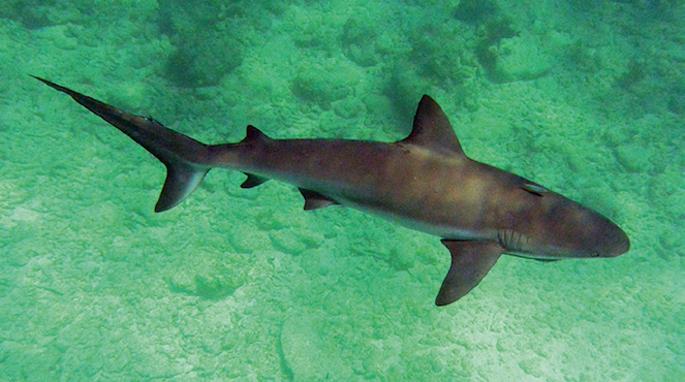
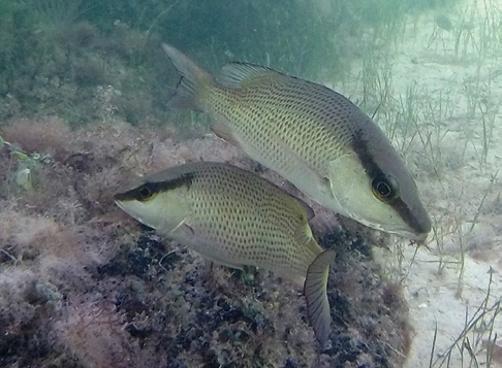
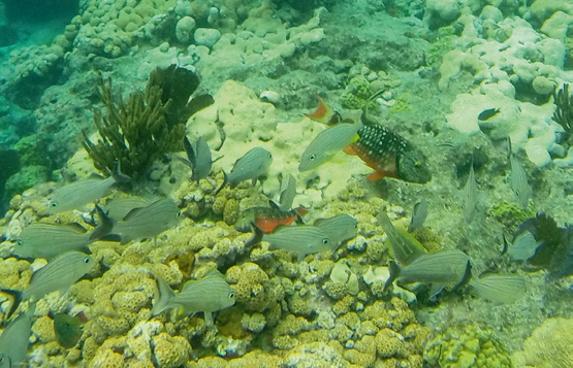
and oceans, and deep ocean areas with no sunlight, low temperatures, and intense pressure. The altitudinal record is set by some nemacheiline river loaches that inhabit Tibetan hot springs at elevations of 5200 m; the record for unheated waters is Lake Titicaca in northern South America, where killifishes and pupfishes live at an altitude of 3812 m. The deepest living fishes are snailfishes and cusk-eels, which occur 8000 m down in the deep sea. When broken down by major habitats, a bit under 60% of fish species live in seawater, about 1% move between freshwater and the sea during their life cycles, and the rest live in freshwater. The highest diversities are found in the tropics. The Indo-West Pacific region known as the Coral Triangle (between Philippines, Indonesia, and New Guinea) has the highest marine diversity with an estimated 4000 species (Allen & Erdmann 2012), whereas South America, Africa, and Southeast Asia, in that order, contain the most species of freshwater fishes (Berra 2001; Lévêque et al. 2008).
Some fishes have adapted to life in water with little oxygen and can breathe air (see Chapter 3). There are even some species that make occasional excursions onto land (see
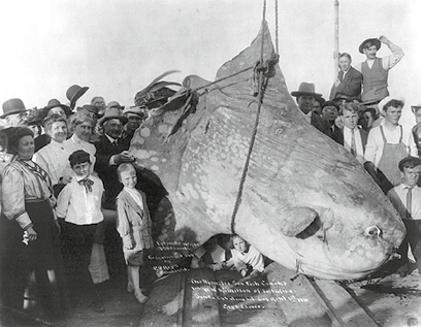
Chapter 7). And we must not forget that over 530 million years of evolutionary adaptations have permitted some descendants of early lobe-finned fishes to become permanently terrestrial –but we call them tetrapods, reserving the term “fish” for those still mainly restricted to aquatic habitats.
Fishes show great variation in body length, ranging more than 1000-fold. The world’s smallest fishes – and vertebrates –mature at around 7–8 mm and include the previously mentioned Indonesian minnow, P. progenetica, and two gobioids, Trimmatom nanus from the Indian Ocean and Schindleria brevipinguis from Australia’s Great Barrier Reef. Parasitic males of a deep-sea anglerfish Photocorynus spiniceps mature at 6.2 mm, although females are 10 times that length. The world’s longest cartilaginous fish is the Whale Shark R. typus, which can exceed 12 m, whereas the longest bony fish is the 8 m long (or longer) Oarfish Regalecus glesne. Body masses top out at 34,000 kg for whale sharks and 2300 kg for the Ocean Sunfish Mola mola (Fig. 1.3). Diversity in form includes relatively fishlike shapes such as minnows, trouts, perches, basses, and tunas, but also such unexpected shapes as boxlike trunkfishes, elongate eels
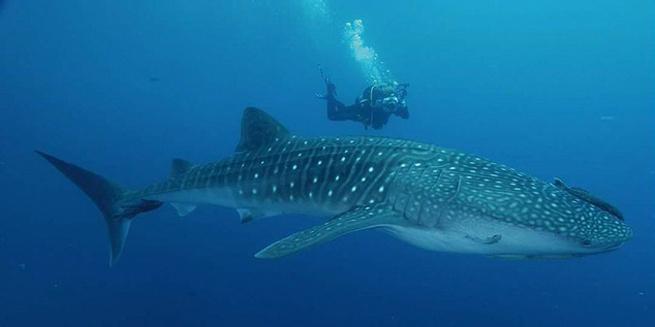

and catfishes, globose lumpsuckers and frogfishes, rectangular ocean sunfishes, question-mark-shaped seahorses, and flattened and circular flatfishes and batfishes, in addition to the exceptionally bizarre fishes of the deep sea.
Superlative Fishes
A large part of ichthyology’s fascination is the spectacular diversity of fishes. As a few examples:
• Coelacanths, an offshoot of the lineage that gave rise to the amphibians (and subsequently to all tetrapods), were thought to have died out with the dinosaurs at the end of the Cretaceous Period, about 65 million years ago. However, in 1938, fishers in South Africa trawled up a live Coelacanth. This fortuitous capture of a “living fossil” not only rekindled debates about the evolution of vertebrates but underscored the international and political nature of conservation efforts (see Chapter 13).
• Lungfishes can live in a state of dry “suspended animation” for up to 4 years, burying themselves in the mud and becoming dormant when their ponds dry up and reviving quickly when immersed in water (see Chapters 3, 13).
• Some Antarctic fishes don’t freeze because their blood contains antifreeze proteins that prevent ice crystal growth. Some Antarctic fishes have no hemoglobin, and thus have clear blood (see Chapter 10).
• Deep-sea fishes include many forms that can swallow prey larger than themselves. Some deep-sea anglerfishes are characterized by females that are 10 times larger than males, the males existing as small parasites permanently fused to the side of the female, living off her bloodstream (see Chapter 10).
• Fishes grow throughout their lives, changing their ecological role several times. In some fishes, differences between larvae and adults are so pronounced that many larvae were originally thought to be entirely different species (see Chapter 9).
• Fishes have maximum life spans of as little as 10 weeks (African killifishes and Great Barrier Reef pygmy gobies) and as long as 400 years (Greenland shark; Neilsen et al. 2016). Several teleost fishes can live past 100 years (Randall & Delbeek 2009). Some short-lived species are annuals, surviving drought as eggs that hatch with the advent of rains. Longer-lived species may not begin reproducing until they are 20 or more years old (see Chapter 8).
• Gender in many fishes is flexible. Some species are simultaneously male and female, whereas others change from male to female or from female to male (see Chapter 8). Fishes, therefore, are the original genderfluid vertebrates and demonstrate that nature includes a broad range of gender identities.
• Fishes engage in parental care that ranges from simple nest guarding to mouth brooding to the production of external or internal body substances upon which young feed. Many sharks have a placental structure as complex as any found in mammals. Egg-laying fishes may construct nests by themselves, whereas some species deposit eggs in the siphon of living clams, on the undersides of leaves of terrestrial plants, or in the nests of other fishes (see Chapter 17).
• Many fishes can detect biologically meaningful, minute quantities of electricity, which they use to navigate and sense prey, competitors, or predators. Some groups can produce an electrical field and detect disturbances to the field, whereas others produce large high-voltage pulses to deter predators or stun prey (see Chapters 4, 16).
• Some fishes can produce light; this ability has evolved independently in different lineages and can be produced either by the fish itself or by symbiotic bacteria (see Chapter 10).
• Although the blood of most fishes is the same temperature as the water surrounding them, some pelagic fishes maintain body temperatures warmer than their surroundings and have circulatory systems that use countercurrent flow to conserve metabolic heat (see Chapter 7).
• Predatory tactics include attracting prey with lures made of modified body parts or by feigning death. Fishes include specialists that feed on ectoparasites, feces, blood, fins, scales, young, and eyes of other fishes (see Chapter 16).
• Fishes can erect spines or inflate themselves with water to deter predators. In turn, the ligamentous and levering arrangement of mouth bones allows some fishes to increase mouth volume by as much as 40-fold (see Chapters 3, 16).
• Some of the most dramatic demonstrations of evolution result from studies of fishes. Both natural and sexual selection have been experimentally manipulated in Guppy, swordtails, and sticklebacks, among others. These investigations show how competition, predation, and mate choice lead to adaptive alterations in body shape and armor, body color, vision, and feeding habits and locales (see Chapters 16, 20). Fishing has also proven to be a powerful evolutionary force, affecting the ages and sizes at which fish reproduce, body shape, and behavior (see Chapter 22).
Fishes have become increasingly important as model organisms for vertebrate research. Because of small size, ease of care, rapid growth and short generation times, and larval anatomical features, such species as Medaka, Oryzias latipes, and Zebrafish, Danio rerio, are used in studies of toxicology, pharmacology, neurobiology, developmental biology, cancer and other medical research, aging, genomics, and recombinant DNA methodology (e.g. Shima & Mitani 2004; Collins et al. 2010; Chang et al. 2013).
A Brief History of Ichthyology
Fishes would be just as diverse and successful without ichthyologists studying them, but what we know about their diversity is the product of the efforts of workers worldwide over several centuries. Science is a human endeavor and knowing something about historical ichthyologists and their contributions should help give a sense of the dynamics and continuity of this long-established science. Knowing the past can inform future directions.
Although natural historians, as well as many others, have studied fishes for millennia, the earliest treatment of fish behavior, reproduction, and classification in Western culture is Aristotle’s Historia Animalium. Published about 2300 years ago, this wide-ranging text recognized cartilaginous and bony fishes and was hugely influential in zoology for two millennia. Modern science generally places the roots of ichthyology in the works of Carl Linne (Linnaeus), who produced the first organized system of classification. Zoologists have agreed to use the 10th edition of his Systema Naturae (1758) as the starting point for formal nomenclature. The genius of Linnaeus’ system is what we refer to as binomial nomenclature, naming every organism with a two-part name based on genus (plural genera) and species (singular and plural, abbreviated sp. or spp., respectively). Linnaeus did not care much for fishes, so his ichthyological classification, which put the diversity of fishes at less than 500 species, is based largely on the efforts of Peter Artedi (1705–1735), the acknowledged “father of ichthyology.” Artedi fell into a canal in Amsterdam one night and drowned under suspicious circumstances (Pietsch 2010). Certainly not the last fish biologist to perish in the aquatic medium, he was buried in an unmarked pauper’s grave, and it was left to his friend Linnaeus to publish the masterpiece Ichthyologia in 1738.
In the mid-1800s, the great French anatomist Georges Cuvier joined forces with Achille Valenciennes to produce the first complete list of the fishes of the world. During those times, French explorers were active throughout much of the world, and many of their expeditions included naturalists. Thus, the Histoire naturelle de poissons (1829–1849) includes descriptions of many species of fishes in its 24 volumes. This major reference is still of great importance to systematic ichthyologists, as are the specimens upon which it is based, many housed in the Museum National d’Histoire Naturelle in Paris.
A few years later, Albert Günther produced a multivolume Catalogue of fishes in the British Museum (1859–1870). Although initially designed to simply list all the specimens in the British collections, Günther included all the species of which he was aware, making this catalog the second attempt at listing the known fishes of the world.
The efforts of Linnaeus, Artedi, Cuvier and Valenciennes, and Günther all placed species in genera, and genera in taxonomic families, based on overall resemblance. A modern philosophical background to classification was first developed by Charles Darwin with his On the Origin of Species in 1859. His theory of evolution meant that species placed together in
a genus were assumed to have had a common origin, a concept that underlies subsequent classifications of fishes and other organisms. In the same decade as Darwin’s monumental publication, Woodward (1851) and Dana (1853) divided the waters of the world into biogeographic provinces based on species distributions, another fundamental contribution to understanding the origins of biodiversity (see Chapter 19).
A major force in American ichthyology was David Starr Jordan (1851–1931). Jordan moved from Cornell University to the University of Indiana and then served as founding president of Stanford University. He and his students and colleagues described the fishes collected during global expeditions in the late 1800s and early 1900s. In addition to a long list of papers, Jordan and his coworkers, including B. W. Evermann, produced several publications that form the basis of our present knowledge of North American fishes. This includes the fourvolume The Fishes of North and Middle America (1896–1900), which described all the freshwater and marine fishes known from the Americas north of the Isthmus of Panama. Jordan (1923) published a list of all the genera of fishes that had ever been described, which served as the standard reference until it was updated and replaced by Eschmeyer et al. (1998).
Overlapping with Jordan was the distinguished British ichthyologist, C. Tate Regan (1878–1943), based at the British Museum of Natural History. Regan revised many groups, and his work formed the basis of most recent classifications. Unfortunately, this classification was never published in one place, and the best summary of it is in the individual sections on fishes in the 14th edition of the Encyclopedia Britannica (1929).
A Russian ichthyologist, Leo S. Berg, first integrated paleoichthylogy into the study of living fishes in his 1947 monograph Classification of Fishes, both Recent and Fossil, published originally in Russian and English. He was also the first ichthyologist to apply the -iformes uniform endings to orders of fishes, replacing the classic and often confusing group names.
In 1966, three young ichthyologists, P. Humphry Greenwood at the British Museum, Donn Eric Rosen at the American Museum of Natural History, and Stanley H. Weitzman at the US National Museum of Natural History, joined with an oldschool ichthyologist, George S. Myers of Stanford University, to produce the first modern classification of the majority of present-day fishes, the Teleostei. This classification was updated in Greenwood’s 3rd edition of J. R. Norman’s classic A History of Fishes (Norman & Greenwood 1975), and is the framework, with modifications based on more recent findings, of the classification used by Joseph Nelson (Fishes of the World, now in a 5th edition) and followed in this book. Over the past 65 years, John E. Randall, based at the Bishop Museum in Honolulu, has formally described over 800 species of fishes, more than any ichthyologist including Linnaeus.
Details of the early history of ichthyology are available in D. S. Jordan’s classic A Guide to the Study of Fishes, Vol. I (1905). For a more thorough treatment of the history of North American ichthyology, we recommend Myers (1964) and Hubbs (1964). An excellent historical synopsis of European and North
American ichthyologists can also be found in the introduction of Pietsch and Grobecker (1987); a compilation focusing on the contributions of women ichthyologists appears in Balon et al. (1994). Some more recent and important discoveries are reviewed in Lundberg et al. (2000).
Introduction to Fish Genetics
All fields of biology, from the conservation of rare species to human medicine, have benefitted tremendously in recent decades from advances in genetics, and ichthyology is no exception. Modern genetics has added significantly to our understanding of evolution, ecology, and conservation of fishes. These areas will be discussed throughout this text where appropriate, but for those readers who could benefit from some updating or reminding, we offer the following general background.
DNA is the blueprint of life, and evolution is the architect. Across the 530 million-year history of fishes, natural selection has continually modified the blueprint to accommodate challenges and new opportunities. The result today is over 35,000 species with unique genetic features, and within each species are thousands or millions of genetically unique individuals. Scientists have learned to read the DNA blueprint in recent decades and have begun to resolve the history written there. Genetic studies can resolve relationships from family pedigrees to the most ancient vertebrate lineages. Between these extremes, genetic surveys are useful for discovering new species and resolving biogeographic patterns (see Chapter 19) and management units in conservation (see Chapters 20, 22).
Genetics contains many specialties. For example, cytogenetics is the study of chromosomes, ecological genetics can reveal breeding behavior, population genetics is used to define management units (or stocks) for fisheries, evolutionary genetics demonstrates the basis of novel organismal traits, and molecular phylogenetics is the application of DNA data to resolve branches in the tree of life. Accordingly, sections on genetics will appear in many chapters of this text – but here, we introduce some of the basic principles and terminology.
The Jargon Barrier
To some students of fish biology, the topic of genetics may seem dry, jargon-laden, and lab-based. It is true that some fish geneticists wear lab coats instead of scuba gear and discuss base pairs instead of bait. However, genetics is also a diverse and exciting field that has much to offer ichthyologists, especially with respect to the focal point of this book, the diversity of fishes. Like many disciplines, the field of genetics has a vocabulary that can be challenging to those unfamiliar with the concepts and terminology. Therefore, Appendix 1 contains concepts and terms needed to understand the parts of the text that focus on genetics and molecular techniques.
Fish Genomics
Genomics is the study of the entire DNA sequence of an organism, which in fishes includes the small mitochondrial genome and the enormous nuclear genome that can contain over a billion base pairs (bp). The earliest explorations of fish genomics were chromosome counts and karyotypes, but genomics now refers primarily to the intensive efforts to record the entire nuclear genome of a species. In the late 1990s, the technology applied to the Human Genome Project was redirected toward fishes and other vertebrates, and a cottage industry of fish genome projects is emerging. The first fish genomes to be completely described come from Zebrafish (D. rerio), Medaka (Oryzias sp.), and two pufferfishes. More recently, next generation sequencing (NGS) has revolutionized the field, providing millions of bp from individual specimens. Whole genomes have been generated for many fishes (e.g. blacktail butterflyfish; DiBattista et al. 2016b), and the list extends to at least 20 bony fishes (including the coelacanth Latimeria chalumnae; Amemiya et al. 2013) and two cartilaginous fishes (including the Whale Shark R. typus; Read et al. 2017). To provide the maximum accessibility for studies of evolution, development, and genetic function, a genome must be annotated. Genome annotation is the process of identifying where each gene is located and what it does. In most cases, researchers don’t need whole annotated genomes, and they only need to find variable sites to resolve relationships from close relatives (kinship) to deep evolutionary lineages (phylogenetics). These studies rely on thousands of single nucleotide polymorphisms (SNPs) scattered throughout the genome (Puritz et al. 2014).
Genome Size
Fish genomes include 21 to 100+ chromosomes in the nuclear genome (nDNA) with two copies of every gene in most (diploid) species. Some 58% of examined teleosts (334 out of 580 species) have 48 or 50 chromosomes (Naruse et al. 2004), and 48 is believed to be the ancestral state for ray-finned fishes. Despite this conservation of chromosome number, overall genome sizes can differ by more than two orders of magnitude, with the lungfish having the largest fish genome (81.6 pg of DNA in a set of chromosomes; 1 pg = 10−12 g), the bichir having the largest actinopterygian (ray-finned fish) genome (5.85 pg), and the tetraodontiforms (such as pufferfish) having the smallest genomes (0.35 pg, Table 1.2), compared to 3.4 pg in the human genome. The number of chromosomes and genome size can vary even within a single genus (see the Oncorhynchus examples in Table 1.2). Three trends in genome size are apparent:
1. There is a progressive reduction in DNA content from the earliest to the most derived bony fishes.
2. Apart from lungfishes, elasmobranchs have the largest fish genomes, with 3–34 pg of DNA (Stingo & Rocco 2001). In contrast, the holocephalans (the other major group
of cartilaginous fishes) have among the most compact genomes (1.2–1.9 pg; Venkatesh et al. 2005).
3. In general, freshwater fishes have larger genomes than marine fishes (Yi & Streelman 2005). This is attributed to smaller population sizes in freshwater fishes, which can reduce the power of natural selection to produce a compact genome.
It is notable that fishes with the most radically derived morphology (tetraodontiforms) have the smallest nuclear genome. The pufferfish (genus Fugu) provided an ideal candidate for the first fish genome study, having much the same set of genes observed in mammals but in a package eight times smaller than the human genome. The insights from the first round of fish genome studies are many, and highlights include:
• Genomes are dynamic with many rearrangements between species and sometimes within species. Segments of the genome that are similar between fishes and mammals are rarely longer than four consecutive genes.
• Previous estimates of the vertebrate genome ranged from 60,000 to 150,000 genes, but that number now appears to be 30,000–40,000 genes.
• Regions of the genome of unknown function are highly conserved (very similar) between fishes and mammals. High similarity between fishes and mammals indicates that these gene regions have important functions that are retained by strong natural selection.
Polyploidization and Evolution
Polyploidization is the wholesale duplication of the nuclear genome, and most authorities agree that such an event lies near the base of the ray-finned fish (Actinopterygian) evolutionary tree. Such events are rare but important in the evolution of fishes. Ohno (1970) proposed that gene duplication is essential for major evolutionary innovations in vertebrates, as opposed to the single nucleotide mutations that can distinguish populations and species. In this view, the duplicated genes are under relaxed selection pressure, because there are now four copies (instead of two) available to get the job done. When polyploidy occurs, the original function of the gene can be maintained, freeing the extra copies to develop new functions (neofunctionalization), or they can double the capacity of a crucial metabolic pathway. Over tens of millions of years, some of the duplicated genes will prove to be redundant and lose their function in a process known as diploidization (returning to the diploid state).
Dramatic support for Ohno’s model of evolution came from the Zebrafish (D. rerio) genome, and the discovery of seven HOX genes, which are important regulators of morphological development during embryonic growth. In mammals there are four HOX genes on four chromosomes, whereas the Zebrafish lineage had eight HOX genes on eight chromosomes, followed by the loss of one copy (Amores et al. 1998). The pufferfish
genomes provide additional evidence of gene duplication and neofunctionalization.
When did this early genome duplication occur? The duplication does not appear in sturgeon or gar but is shared by all surveyed teleosts (Hoegg et al. 2004). Hence this event must have occurred in the basal teleost lineage, on the order of 300–400 million years before present (mybp). This genome duplication may have provided a powerful toolkit for diversification of the teleosts, by providing twice as many genes as existed in ancestral fishes (Roest Crollius & Weissenbach 2005).
The ancient polyploidization in teleosts is not the only genome duplication in bony fishes. Additional whole-genome duplications have occurred in the ancestors of modern salmon 25–100 million years ago (mya) (Allendorf & Thorgaard 1984), in catostomids (suckers) about 50 mya (Uyeno & Smith 1972), and in carp about 12 mya (David et al. 2003). Partial duplications of the genome are probably more common, either as unequal exchanges during genetic recombination or the unequal sorting of chromosomes during meiosis. This phenomenon can occur when two species hybridize, as observed in poecilliiform fishes (guppies and mollies), occasionally giving rise to parthenogenic (unisexual) species (Vrijenhoek 1984; see Chapter 8).
Mitochondrial Genome
Mitochondria are the energy factories in living cells of all eukaryotes, and they have their own compact genome (mtDNA). In fishes and most other vertebrates, the mtDNA genome is about 16,500 bp, coding for 13 proteins, 22 tRNAs, 2 rRNAs, and has a distinct segment for the origin of gene replication known as the control region. In the first decades of molecular genetic studies, the mitochondrial genome was much more accessible than the nuclear genome because it has more copies per cell, a small size, and is constructed like a single chromosome. Hence the study of mitochondrial genomics has proceeded much more rapidly than nuclear genomics, with over 2900 complete fish mtDNA genomes resolved at this time (Miya et al. 2003; see MitoFish database at University of Tokyo: http://mitofish.aori.u-tokyo.ac.jp/). In contrast to the nuclear genome, the mtDNA has retained the same genes in the same locations, and genome size is very similar across the vertebrates (Table 1.2).
Transgenic Fishes
There has been considerable interest in genetically modified fishes to produce pharmaceutical products, novel aquarium pets, and faster-growing strains for human consumption. This was originally attempted by “shotgunning,” injecting many copies of the desired gene into the nucleus of the eggs, a process with a very low success rate. Subsequent methods have grown more sophisticated, using viruses that can insert desired genes into a chromosome (Dunham 2004). With the advent of advanced CRISPR technology (Hsu et al. 2014), researchers
TABLE 1.2
Chromosome number, nuclear genome size, and mitochondrial genome size in select fishes. C-values indicate the amount of DNA in a haploid complement (a single copy of the chromosomes), measured in picograms per cell. References for chromosome number and C-value are available from the Animal Genome Size database (http:// www.genomesize.com). The nuclear genome sizes, in millions of base pairs (mb), are from Roest Crollius and Weissenbach (2005). References for mitochondrial genome sizes are given, and sizes are presented in thousands of base pairs (kb). In some cases, the chromosome number could not be obtained from the same species used to estimate genome size, so values are obtained from congeners (fish in the same genus) as follows: the chromosome number for Anguilla japonica is based on congeners A. rostrata and A. anguilla, for Sardinops it is based on S. sajax, for Fugu on F. niphobles, and for Tetraodon on T. palembangensis. The mtDNA genome size for dogfish is based on Scyliorhinus canicula. Species
Coelacanth Latimeria spp.
Lungfish
Protopterus dolloi
Bichir
Polypterus ornatipinnis
Eel
Anguilla japonica
Sardine
Sardinops melanostictus
Carp
Cyprinus carpio
Zebrafish
Danio rerio
Stickleback
Gasterosteus spp.
Chinook Salmon
Oncorhynchus tshawytscha
Rainbow Trout
Oncorhynchus mykiss
Medaka
Oryzias sp.
Pufferfish
Fugu rubripes
Green Pufferfish
Tetraodon nigroviridis
(Pedersen 1971)
(Cimino & Bahr 1974)
(Vervoort 1980)
(Bachmann 1972
(Hinegardner & Rosen 1972)
(Ida et al. 1991)
(Hinegardner & Rosen 1972)
(Hinegardner & Rosen 1972)
(Hinegardner & Rosen 1972)
(Ojima et al. 1963)
(Rasch 1985)
(Uwa 1986)
(Ojima & Yamamoto 1990)
(Hinegardner & Rosen 1972) 0.35/350
(Inoue et al. 2005)
(Zardoya & Meyer 1996)
(Noack et al. 1996)
(Inoue et al. 2001)
(Inoue et al. 2000)
(Chang et al. 1994)
(Broughton et al. 2001)
(Wilhelm et al. 2003)
(Zardoya et al. 1995)
(Elmerot et al. 2002)
can insert genes in the desired location with surgical precision, using nuclease (DNA cutting) enzymes and customized RNA segments. (CRISPR stands for “clusters of regularly interspaced short palindromic repeats.”) The journal Science named CRISPR genome editing technology as the 2015 breakthrough of the year, because of the far-reaching implications for repairing defective genes, eliminating disease, and modifying the genomes of plants and animals. No doubt, these benefits will include revelations about fish biology and evolution.
The first genetically modified fish was announced in 1984, based on Rainbow Trout (Oncorhynchus mykiss) eggs injected with metallothionein (toxic metal resistance) gene (Maclean & Talwar 1984). Another early success was a transgenic Nile Tilapia (Oreochromis niloticus) modified with a gene for growth hormone. It attained three times the size of normal tilapia (Martínez et al. 1996). Rainbow Trout and Coho Salmon (Oncorhynchus kisutch) have also been modified with a salmon growth hormone gene that produced larger fish (Devlin et al. 2001). The first transgenic aquarium fish is the glofish®, a Zebrafish (D. rerio) with red, green, and orange fluorescent colors. Other species of glofish® have since been developed for the aquarium trade (see http://www.glofish.com/). This fluorescence gene may eventually be used to detect aquatic pollution by switching on a bright color in fishes that are exposed to environmental contaminants. There are now at least 50 transgenic fishes in research and aquaculture. In 2015, the US Food and Drug Administration approved the first transgenic fish for human consumption, the AquAdvantage salmon, an Atlantic salmon (Salmo salar) with a growth hormone gene from Chinook Salmon (Oncorhynchus tshawytscha) and a gene promoter from Ocean Pout (Zoarces americanus).
Many authorities regard transgenic fishes as a potential boon to aquaculture, allowing higher survival, faster growing fishes, and larger yields. Indeed, genetically modified fishes have the potential to alleviate hunger and promote human health in impoverished corners of the globe. However, other authorities warn of the hazards of transgenic fishes, especially escaping into the wild (Muir & Howard 1999, Bailey 2015). These hazards are similar to those of non-native fish introductions (see Chapter 22), with the additional threat that transgenic fishes could breed with native stocks. In a study of a transgenic Medaka (O. latipes), the modified males had greater mating success when introduced into a natural population, presumably because of their larger size, but their offspring had significantly lower survival (Muir & Howard 1999). In these circumstances, the accidental introduction of transgenic fishes might jeopardize future reproduction, possibly leading to extinction. Clearly, the benefits of this technology have to be balanced against significant risks.
Additional Sources of Information
This book is one view of ichthyology, with an emphasis on diversity and adaptation (please read the preface). It is by no means
the final word nor the only perspective available. As undergraduates, we learned about fishes from other textbooks; all of these books are valuable. We have read or reread them during the production of this book to check on topics deserving coverage, and we frequently turn to them for alternative approaches and additional information. Among the most useful are Lagler et al. (1977), Bone et al. (1995), Hart & Reynolds (2002a, 2002b), Moyle & Cech (2004), and Barton (2006). For laboratory purposes, Cailliet et al. (1986) and Hastings et al. (2014) can be helpful. From a historical perspective, books by Jordan (1905, 1922), Nikolsky (1961), and Norman and Greenwood (1975) are informative and enjoyable. Three references have proven indispensable during the production of this book, and their ready access is recommended to anyone desiring additional information and particularly for anyone contemplating a career in ichthyology or fisheries science. Most valuable is Nelson et al. Fishes of the World (5th edn, 2016). For North American workers, the current edition of Page et al. Common and Scientific Names of Fishes from the United States, Canada, and Mexico (7th edn, 2013) is especially useful. Finally, of a specialized but no less valuable nature, is Eschmeyer et al.’s Catalog of Fishes (https://www.calacademy.org/scientists/ projects/catalog-of-fishes). The first two books, although primarily taxonomic lists, are organized in such a way that they provide information on currently accepted phylogenies, characters, and nomenclature; Nelson et al. (2016) is remarkably helpful with anatomical, ecological, evolutionary, and zoogeographic information on most families. Eschmeyer’s volumes are invaluable when reading older or international literature because they give other names that have been used for a fish (synonymies) and indicate the family to which a genus belongs.
Of a less technical but useful nature are fish encyclopedias, such as Wheeler’s (1975) Fishes of the World, also published as The World Encyclopedia of Fishes (1985), McClane’s New Standard Fishing Encyclopedia (McClane 1974), or Paxton & Eschmeyer’s (1998) EncyclopediaofFishes(the latter is fact-filled and lavishly illustrated). Helfman & Collette (2011) address many common, and some not-so-common, questions about fishes. Species guides exist for most states and provinces in North America, most countries in Europe (including current and former British Commonwealth nations), and some tropical nations and regions. These are too numerous and too variable in quality for listing here; a good source for titles is Berra (2001, 2007). Two of our favorite geographic treatments of fishes are as much anthropological as they are ichthyological, namely Johannes’ (1981) Words of the Lagoon and Goulding’s (1980) The Fishes and the Forest. A stroll through the shelves of any decent public or academic library is potentially fascinating, with their collections of ichthyology texts dating back a century, geographic and taxonomic guides to fishes, specialty texts and edited volumes, and works in or translated from many languages. Among the better known, established journals that specialize in or often focus on fish research are Ichthyology and Herpetology (formerly Copeia), Transactions of the American Fisheries Society, Environmental Biology of Fishes, North American Journal of Fisheries Management, US Fishery Bulletin, Canadian Journal of Fisheries and Aquatic Sciences, CanadianJournalofZoology,
